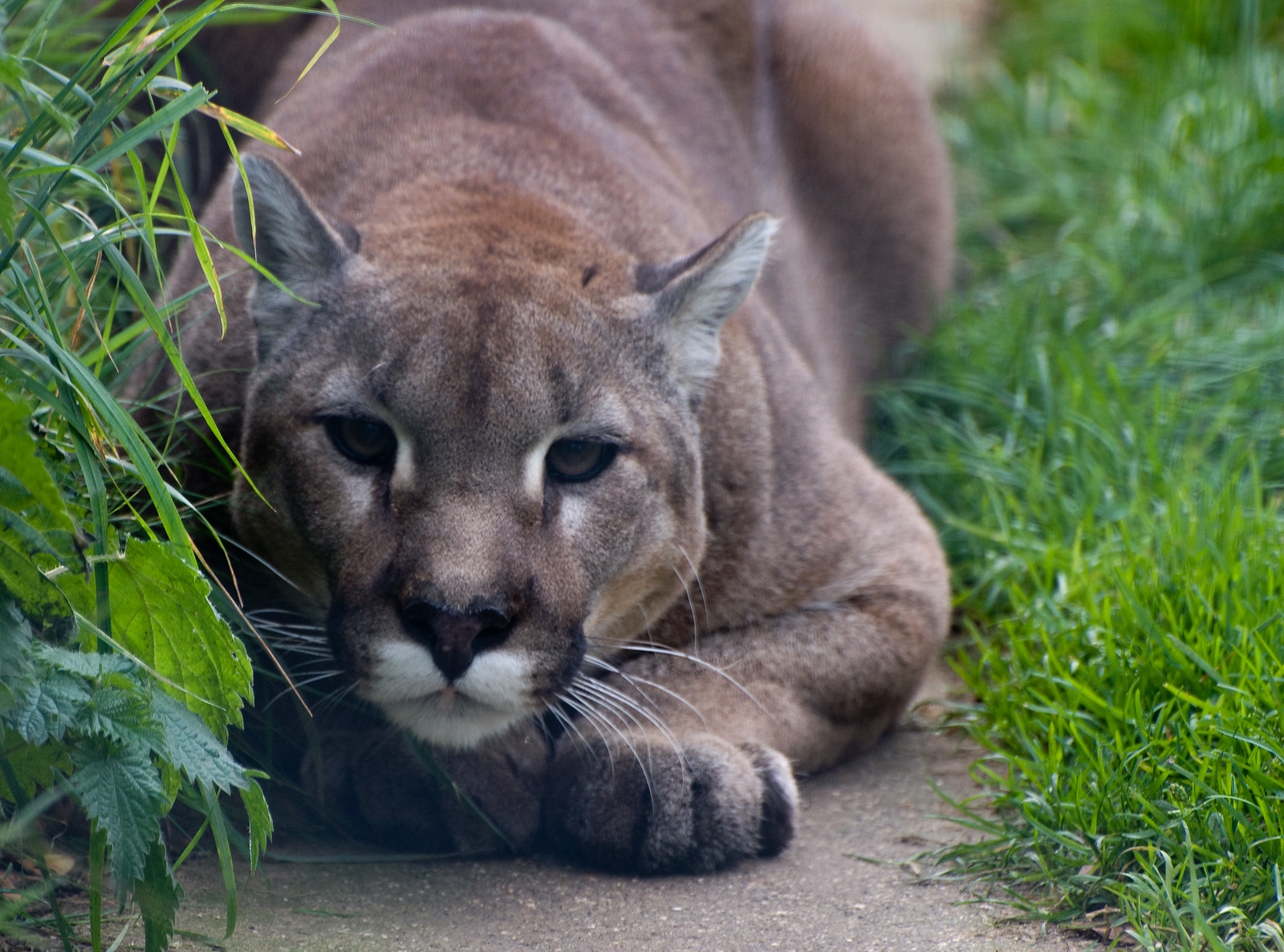
The territory of one male rarely overlaps with another male’s territory, but it may overlap that of several females. The sizes of home ranges vary widely, but an average male home range would cover about 300 km 2, and a female’s about half that. Male cougars usually have larger home ranges than females. Males and females also patrol their territory. The scratches serve not only to delineate the boundary but also to attract females in heat. They may also leave claw marks on trees near the edge of their territory. Solitary animals, they discourage other cougars from entering their territory by leaving “scratches” or piles of leaves, pine needles, and dirt covered with urine and feces. Within their home range, cougars establish territories which they defend against intruders.

Cover is probably the key habitat feature for a cougar since it is important for stalking prey, establishing den sites, and camouflage.Ĭougars live within a “home range,” where their needs for food, water, and shelter are met. It is found in habitats suitable for white-tailed deer and mule deer, the cougar’s preferred prey, and in western Canada, it inhabits forested fragments of foothills, mountains, and interior plateaus. The cougar occupies a wide range of vegetation types. Normally a silent hunter, the cougar, like any cat, becomes vocal during the breeding season. The English name “cougar” and the French “couguar,” now widely used in Canada, were adapted from the Brazilian native name “cuguacuarana.” The name “mountain lion” is extensively used in the western United States, and “puma” is the native Peruvian name. The French explorers of southern Quebec and New Brunswick called it the “carcajou,” a name later given to the wolverine, causing great confusion between the two species in writings about them. The Maliseet of New Brunswick call the cougar “pi-twal,” meaning “the long-tailed one.” English settlers along the Atlantic coast gave it the name “panther” after the Old World panther, which they had seen in animal shows, zoos, and artworks. The cougar is known by many names, depending on local culture and legend. The cougar’s front feet and claws are larger than its hind parts, allowing it to clutch large prey. Each digit is equipped with a claw that remains hidden when the animal is walking but that is used with deadly effectiveness when grasping prey. Like all members of the cat family, cougars have five digits on their forepaws (including the dewclaw) and four digits on their hind paws. Its muscular jaws, wide gape, and long canine teeth are designed for clamping down and holding onto prey larger than itself, and its teeth are specially adapted for cutting meat and sinews. The cougar is well adapted for grasping and cutting up large prey, with extremely strong forequarters and neck. Kittens are spotted at birth, but lose the spots before the end of their first year. The backs of the ears and the tip of the tail are black, and there are black markings on the face. In North America, the total body length of adult male cougars is slightly more than 2 m and of adult females, slightly less than 2 m.Ĭougars in North America have short fur ranging in colour from reddish, greyish, or tawny to dark brown.

In southwestern Alberta, for example, average weights for adult males and females are 71 kg and 4l kg, respectively.

Across the cougar’s range, adult males typically weigh almost one and a half times more than females. It distinguishes the cougar from the lynx and the bobcat.Ĭougars vary considerably in size and weight throughout their range, with individuals being larger and heavier in North America than in South America. Another distinctive characteristic of the cougar is its long tail: measuring up to a metre long, it is important for balance. It has large eyes with round pupils, an adaptation to the cougar’s nocturnal, or night time, behaviour. The cougar has a lithe, muscular, compact, and deep-chested body, with a rounded and shortened head and very visible whiskers. Recent taxonomic research suggests that all North American cougars are essentially the same species, although there are some genetic and morphological differences related to geographic location. In the past, the North American cougar was separated into four subspecies. Larger than the other two, the lynx and the bobcat, it is also the second largest cat in the New World. The cougar Puma concolor is one of only three wild felid species, or members of the cat family, found in Canada.


 0 kommentar(er)
0 kommentar(er)
